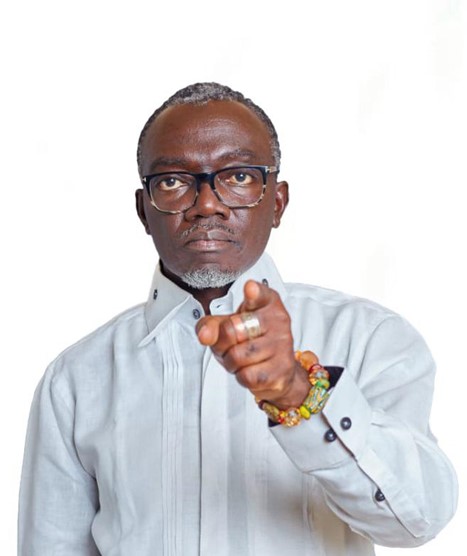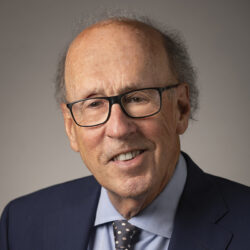By Douglas BOATENG (Prof)
Misunderstood financial concepts are not only draining the continent’s resources but also jeopardising the future of Africans, including generations yet to come.
In an era when headlines often overshadow genuine truths, discussions about Africa’s development are frequently derailed by complex jargon and the misapplication of financial models. A crucial distinction in this dialogue lies between corporate financing and investment financing, which includes strategic equity positions. While both are components of the financial ecosystem, they fulfil distinct roles. Blurring the lines between them represents a technical mistake that could affect an entire generation. This issue extends beyond economics; it touches on sovereignty, legacy, and impact.
Different instruments. Different outcomes
Corporate financing is typically transactional in nature. It provides short- to medium-term financial lifelines, manages cash flows, facilitates payroll, issues credit lines, and supports working capital. While essential for operational continuity, it is not intended to fund generational transformation. Investment financing, however, is a strategic endeavour. It mobilises long-term capital, structures infrastructure deals, underwrites development bonds, syndicates complex financing instruments, and enables public-private partnerships. If corporate financing keeps the system functioning, investment financing determines what that system will become in 30 years.
The structural mismatch that hurts progress
Across the continent, however, corporate financing tools are frequently used to fund investment financing ambitions. Countries borrow short and plan long. They take out commercial loans with high-interest terms for projects that require patient capital. The result is a dangerous mismatch akin to building a national hospital with a credit card and then wondering why the recovery room is in debt. In Ghana, over 40percent of the government’s revenue in 2023 was allocated to servicing debt, a significant portion of which was tied to short-term, commercial-style borrowing.
In Kenya, the Standard Gauge Railway was hailed as a symbol of progress. Yet by 2022, Kenya was spending over KSh60 billion annually on repayments to the China EXIM Bank, while the railway’s revenue consistently fell below break-even. The vision wasn’t flawed. The financing was. In Mozambique, the infamous 2016 “tuna bond” scandal involved over US$2 billion in hidden loans marketed as sovereign guarantees. The fallout triggered a national debt crisis, led to the suspension of donor support, and pushed more than 1.5 million people deeper into poverty. It wasn’t just a financial scandal. It was a governance failure.
Short-term borrowing, long-term consequences
During the oil boom, Angola borrowed heavily against future oil revenues. When prices collapsed in 2015, the economy buckled. Hospitals lacked basic supplies, and infrastructure projects were suspended. A fiscal healing process prioritised repayment over resilience. South Africa’s Eskom has over R400 billion in debt from short-term loans for long-term infrastructure.
Lacking a capital strategy, its debt exceeded capacity, leading to blackouts, investor disillusionment, and bailout requests. In contrast, Botswana’s Pula Fund invests diamond revenues for long-term returns, while diaspora bonds and domestic efforts fund Ethiopia’s Grand Renaissance Dam. These examples show that national transformation needs more than vision; it requires sustainable financing.
Pension and sovereign funds – Stewards of intergenerational dignity
Africa’s national pension and sovereign wealth funds were designed not just for capital management, but as intergenerational agreements. Pension fund institutions, such as Ghana’s SSNIT, Nigeria’s PENCOM, and South Africa’s GEPF, aim to offer stability, dignity, and security to those who supported their countries during crucial times.
However, when analysed through the lens of political convenience, their true intent often diminishes. What should serve as a foundation for national stability risks being reduced to tools for short-term financial relief. Such misinterpretations are not simple mistakes; they signify a gradual decay of public trust and the honour of generational continuity. Sovereign funds across the continent reflect this same tension. Increasingly, their national assets under management (AUM) are managed with a corporate financing mentality: preserving liquidity, minimising risk, and deferring vision.
Botswana’s Pula Fund (US$4.1 billion – diamond revenues), Nigeria’s NSIA (US$2.4 billion – oil revenues), Ghana’s MIIF (US$1.5 billion; mining revenues-estimated and yet to be independentlyconfirmed*), Angola’s FSDEA (US$2.2 billion – oil revenues), and Ghana’s GPF (US$1.4 billion – oil revenues) were designed not merely to preserve wealth but to guide these nations steadily through volatility toward long-term transformation.
This subtle but consequential shift away from long-term investment thinking toward short-term fiscal patchwork not only defeats their founding purpose but risks turning instruments of hope into tools of erosion. These funds are not balance sheet buffers. They are national compasses. Their purpose is not to survive the moment, but to shape the next era.
MIIF’s national assets under management (AUM) growth from approximately US$125 million in October 2021 to just under US$1.5 billion by the end of 2024, although yet to be independently confirmed, is still noteworthy. Based on several excerpts from the AFSIC conference proceedings, the Business and Financial Times, and multiple public presentations by MIIF executive management in 2024 across Canada, France, South Africa, Ghana, the United States, the United Kingdom, the United Arab Emirates, independent comments from leading fund executives, among others, the operational approach of the generational fund reflects that of other thought-leading and world-class sovereign wealth funds: long-term equity investments, aggressive royalty collection and expansion strategies, as well as meticulously considered risk management and governance principles.
Managing short-term obligations is understandable, but it’s crucial to remember the broader mandate: these funds aim to grow wealth purposefully. Treating generational capital transactionally may provide temporary balance, but risks diminishing the intended generational impact.
Learning from global models
Singapore’s Temasek Holdings, established in 1974, manages over US$400 billion in long-term investments, driving innovation, education, and infrastructure. Canada’s CPPIB manages over US$570 billion, guided by legislation and long-term strategy, not by the ballot box. Norway’s Pension Fund converts oil revenues into future security through transparency, diversification, and disciplined governance. South Korea’s KIC oversees the country’s foreign reserves with a globally diversified investment portfolio to depoliticise national wealth and align it with national goals.
The UAE’s ADIA, managing over $850 billion, uses its fund not just to preserve oil wealth but to finance a post-oil future, investing in tourism, clean energy, and logistics. These examples show that institutional capital, guided by purpose and vision, can transform nations. It’s not about how much a country has but how wisely that money is structured, protected, and deployed.
Exporting brilliance. Importing confusion
Africa nurtures top investment finance professionals who handle global transactions from Wall Street to Hong Kong. However, these talents are often excluded from domestic policymaking, a situation that needs to change. Training global capital architects without their involvement in national strategies is tragic, as the issue is not a lack of skills but rather their undervaluation. Africa must shift from ad hoc decisions to structured capital strategies. The African Development Bank cites over US$25 billion in stalled infrastructure projects due to poor financial structuring, while the World Bank highlights a US$100 billion annual infrastructure gap, largely from misaligned funding models.
From political slogans to financial blueprints
African leaders need to shift from applause-driven announcements to implementing generational financing, reducing reliance on donors, and prioritising long-term investments over electoral budget concerns. Investment finance enables risk sharing, encourages strategic partnerships, and offers access to patient capital, creating enduring connections that last for the next 50 years, rather than just 4-5 years. The Lagos-Calabar highway illustrates this: while ambitious, the financing model is unclear. Africa has seen many grand visions fail due to poorly structured financing. Thoughtfully planned investment finance can help avoid these costly errors.
The human cost of mismanagement
Mismanagement of sovereign and pension funds affects individuals: the retired teacher awaiting a pension, the nurse who cannot afford medication, and the child in a nation prioritising short-term applause over long-term prosperity. A flawed financial model and poor governance lead to budgetary constraints, thereby undermining long-term economic stability.
A continental clarion call
Africa must now institutionalise capital wisdom. This is the century for building sovereign wealth institutions and investment authorities that are independent, competent, and accountable. Let us:
- Embed investment logic into public sector leadership training
- Include capital structuring in economic policy discourse
- Elevate local professionals into strategic roles in national finance
- Prioritise transparency, governance, and citizen accountability
Final reflection
The inconvenient truth is this: Sovereign and pension funds must be more than mere money set aside. They must represent patient capital with a conscience, deployed wisely, shielded from election cycles, and guided by the long arc of nation-building. Managing generational capital with a transactional/corporate finance mindset may balance the books, but it ultimately bankrupts the future. Now, more than ever, as Africa shapes its path in a rapidly changing global economy, there is an opportunity to reaffirm the original investment intent of these funds. With the proper balance of governance, professionalism, an experienced independent board, the hiring of the right personnel, and a long-term vision, these funds can be pillars of resilience and instruments of transformation for future generations.
>>>the writer is a globally celebrated thought leader, Chartered Director, industrial engineer, supply chain management expert, and social entrepreneur known for his transformative contributions to industrialisation, procurement, and strategic sourcing in developing nations.
As Africa’s first Professor Extraordinaire for Supply Chain Governance and Industrialization, he has advised governments, businesses, and policymakers, driving sustainability and growth. During his tenure as Chairman of the Minerals Income Investment Fund (MIIF) and Labadi Beach Hotel, he led these institutions to global recognition for innovation and operational excellence. He is also the past chairman of the Public Procurement Authority.
A prolific author of over 90 publications, he is the creator of NyansaKasa (Words of Wisdom), a thought-provoking platform with over one million daily readers. Through his visionary leadership, Professor Boateng continues to inspire ethical governance, innovation, and youth empowerment, driving Africa toward a sustainable and inclusive future.










